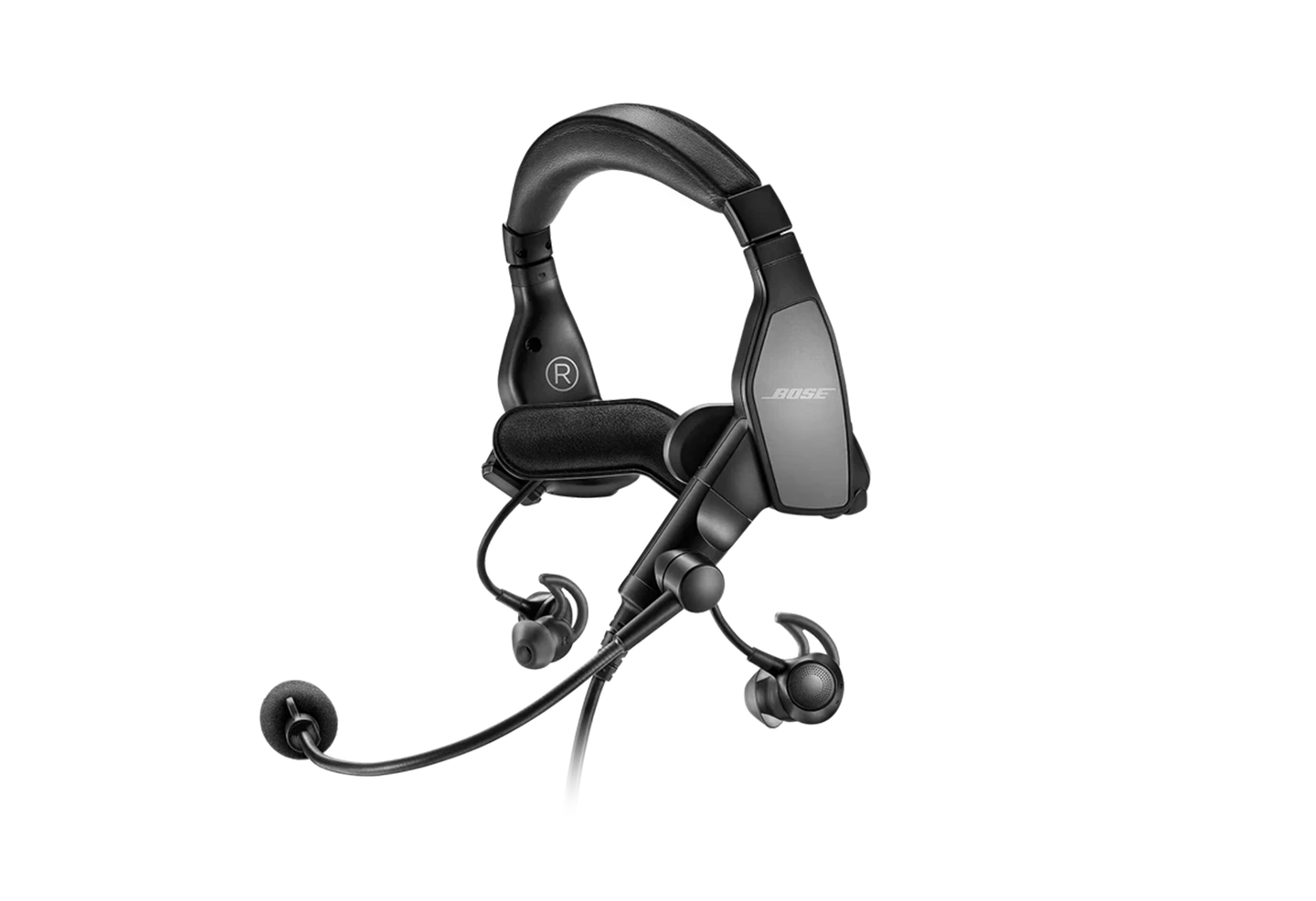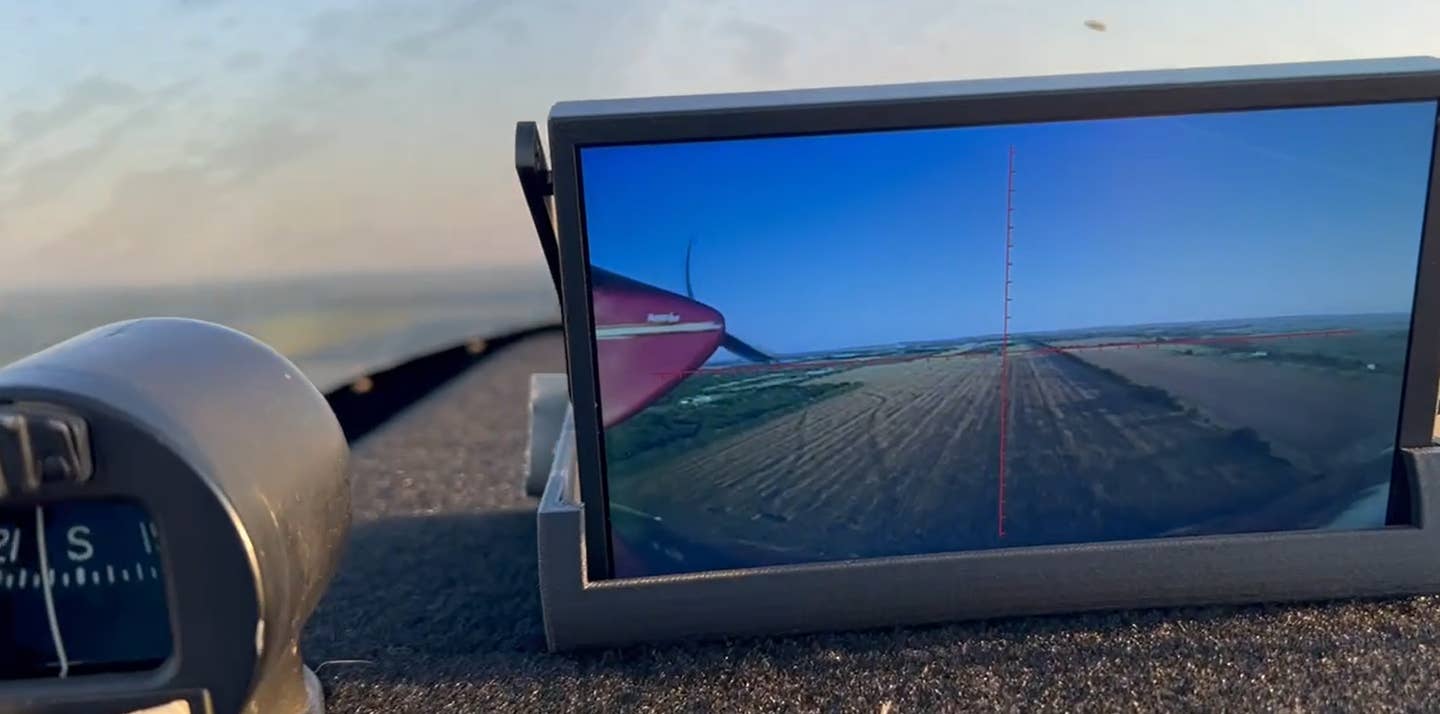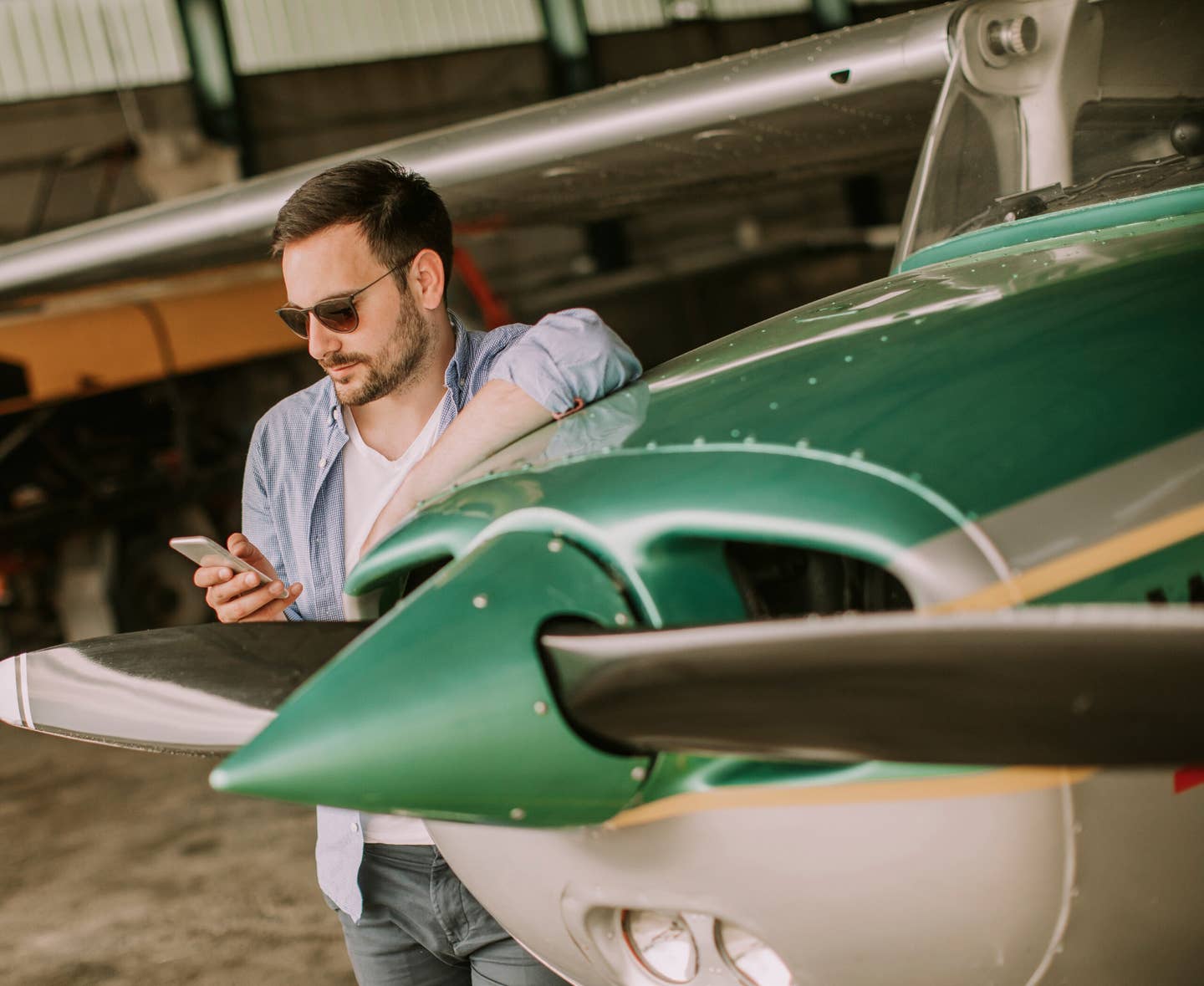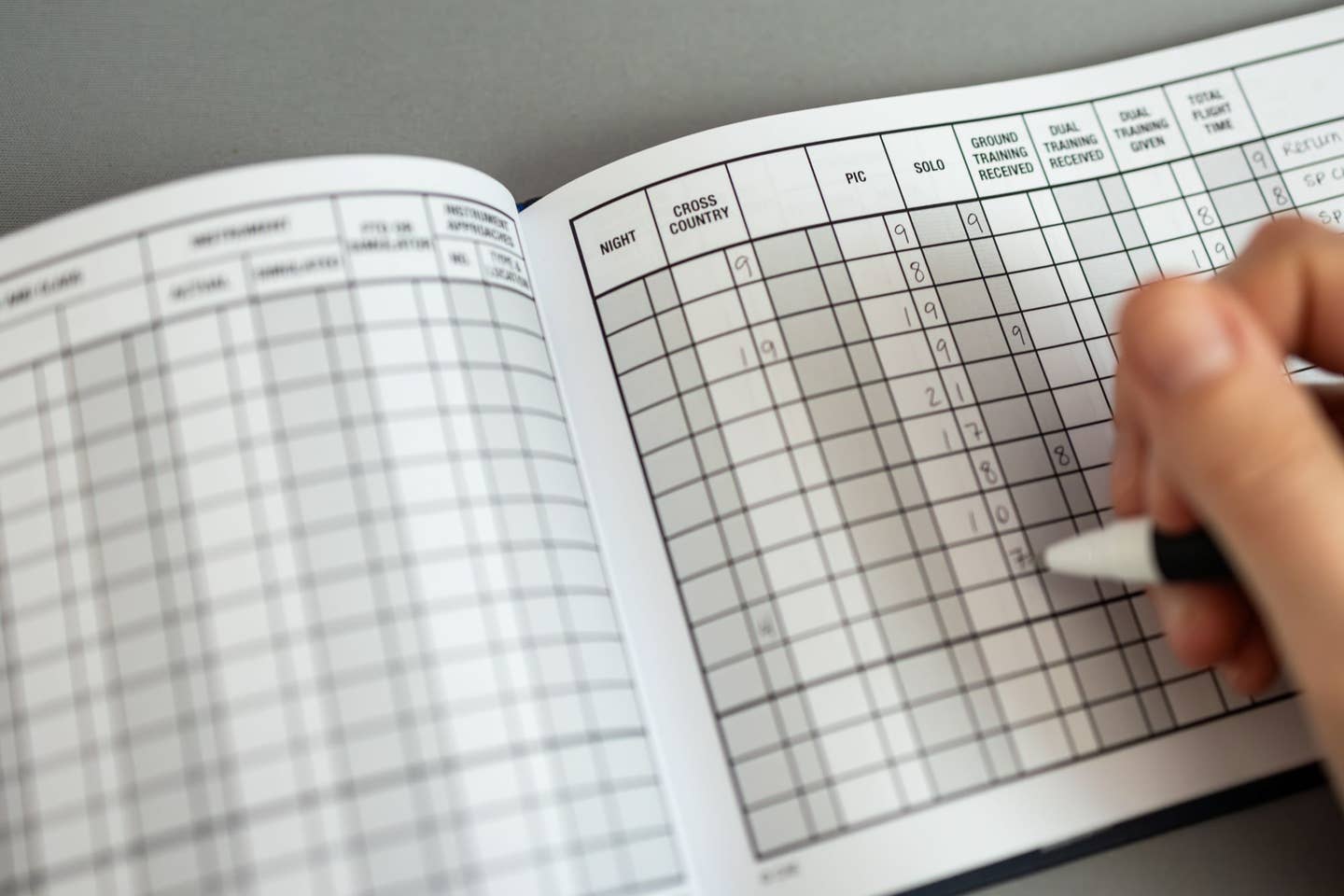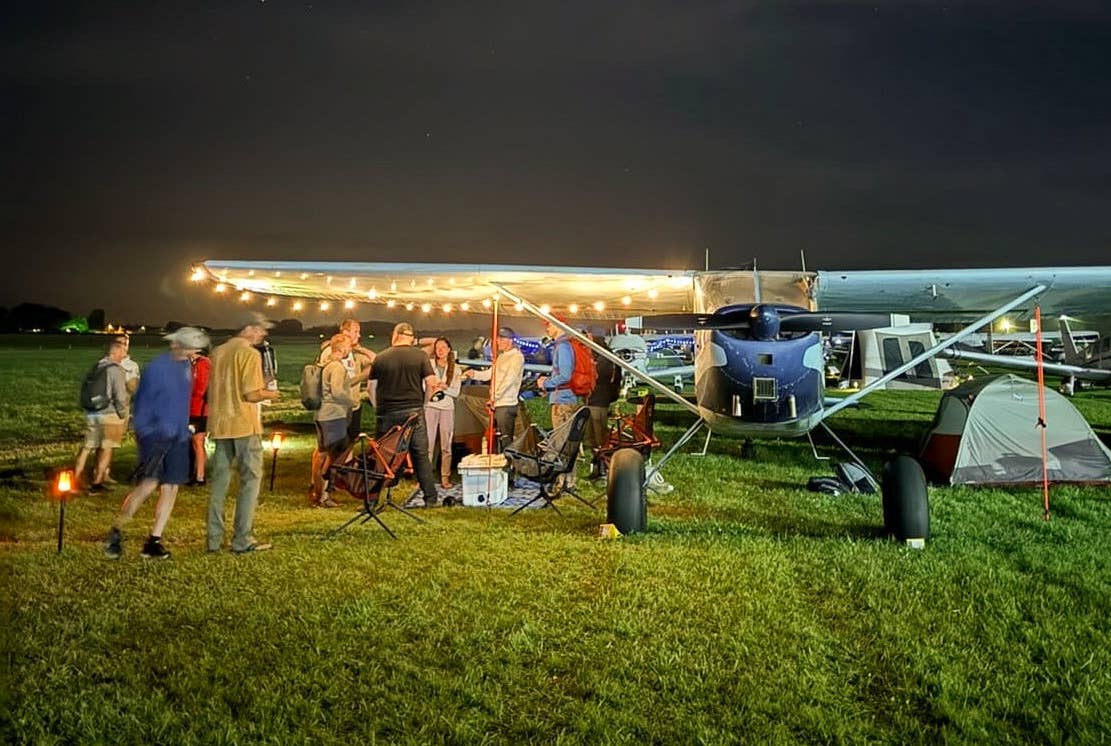
AirVenture visitors crammed in to Best Aviation’s booth in Hangar C as Mark Patey introduced the company’s latest tug. Pia Bergqvist
Best Tug’s booth in Hangar C at the AirVenture showgrounds in Oshkosh, Wisconsin, was mobbed on Tuesday afternoon as Mark Patey introduced the company’s latest tug—the Sierra. With lots of high-tech features, the Sierra was just finished before the team left for the show, so it is truly a fresh product.
Designed for use at FBOs or for larger airplanes than the company’s Alpha, Bravo, Echo and Romeo tugs can move, the Sierra is designed to prevent damage to aircraft during the tugging process and to help FBOs cover themselves for potential liability. The tug has two touchscreen displays on the main console to set up the machine for success.
On the left touchscreen, you can an employee ID. The tug is programmed to provide access only to the airplanes within the weight category that the ID’d employee has been trained for. “Now they have a selection of weight, class and category,” Patey said. There are six categories with corresponding images of associated airplanes that the tug operator can tap. The tug then programs the auto throttles, auto braking and traction control to provide the appropriate torque for the aircraft category you’re moving.
“Any tug strong enough to move a heavy airplane can rip the gear off of a smaller aircraft,” Patey said. And if the wheel doesn’t tear off, the damage can lead to nosewheel shimmies that most pilots have experienced at some point in their flying careers.
Like an airplane, the tug has “nav lights” on the sides of the control column. You might wonder why there are two lights on each side. The idea is to alert pilots and air traffic controllers which direction the airplane is going, since the nav lights are unlikely to be powered on the aircraft itself. Whether the red and green lights are on the right or left side depends on which direction the tug is moving.
A built in GPS enables operational tracking. When the employee ID and aircraft tail number are entered, the system logs where the aircraft is picked up and dropped off. Critical operational data are also logged in a cloud database. “So, if a pilot comes in - and this is quite common - they notice flat spots on the tires, it definitely wasn’t them,” Patey said as a fictional scenario. “They say: ‘I have a nose gear shimmy, you over torqued my nose gear,’ or ‘I have flat tires,.’” The Sierra tug allows the FBO to log in and see what actually happened during the tug process. Patey continued: “Actually, Jason, at 10:23, moved your aircraft from this location to this location and never exceeded a draw bar course of 322 pounds while towing your airplane. It’s actually impossible that they created any skid marks on your tires.”
The shape of the Sierra is designed to prevent damage to turboprop propellers – an extremely expensive snafu. The sides of the tug contain weather proof containers with internal lighting in different colors to help protect the eyes from losing their adaption during night operations.
The price for the Sierra varies depending on the towing capacity. There will be a single motor version with options for 30,000, 60,000 and 90,000 pounds. A dual motor version, which has independent steering for the wheels, will have options for 33,000, 66,000 and 99,000 pounds. Patey expects the price point for the single motor version to be about $1.50 per pound, while the dual motor version will be about $1.70 per pound. Patey has already taken several deposits for the tug and he expects first deliveries in about eight months.

Sign-up for newsletters & special offers!
Get the latest FLYING stories & special offers delivered directly to your inbox

